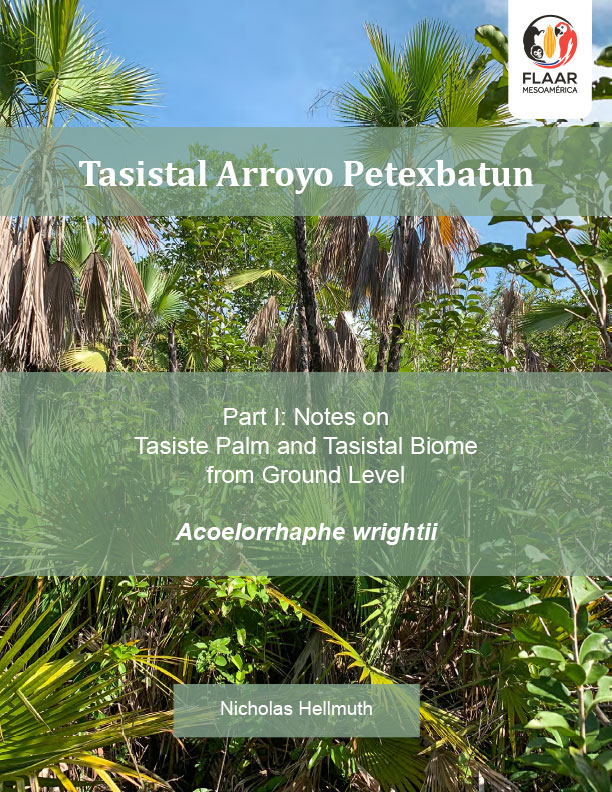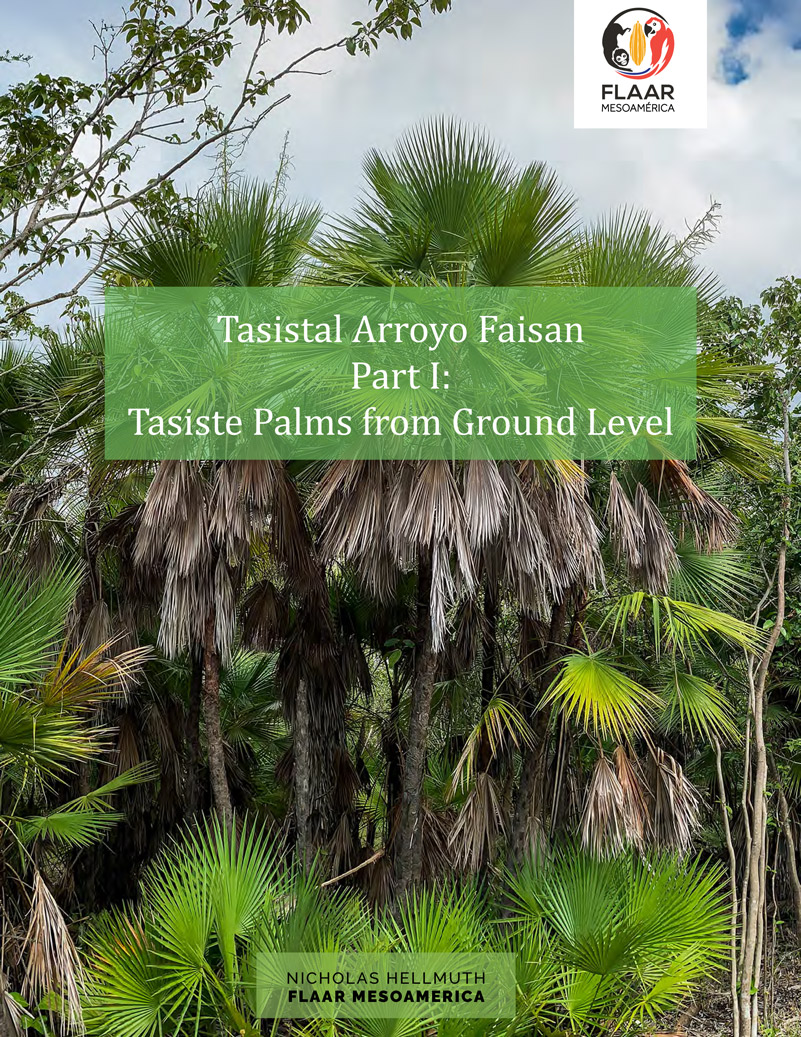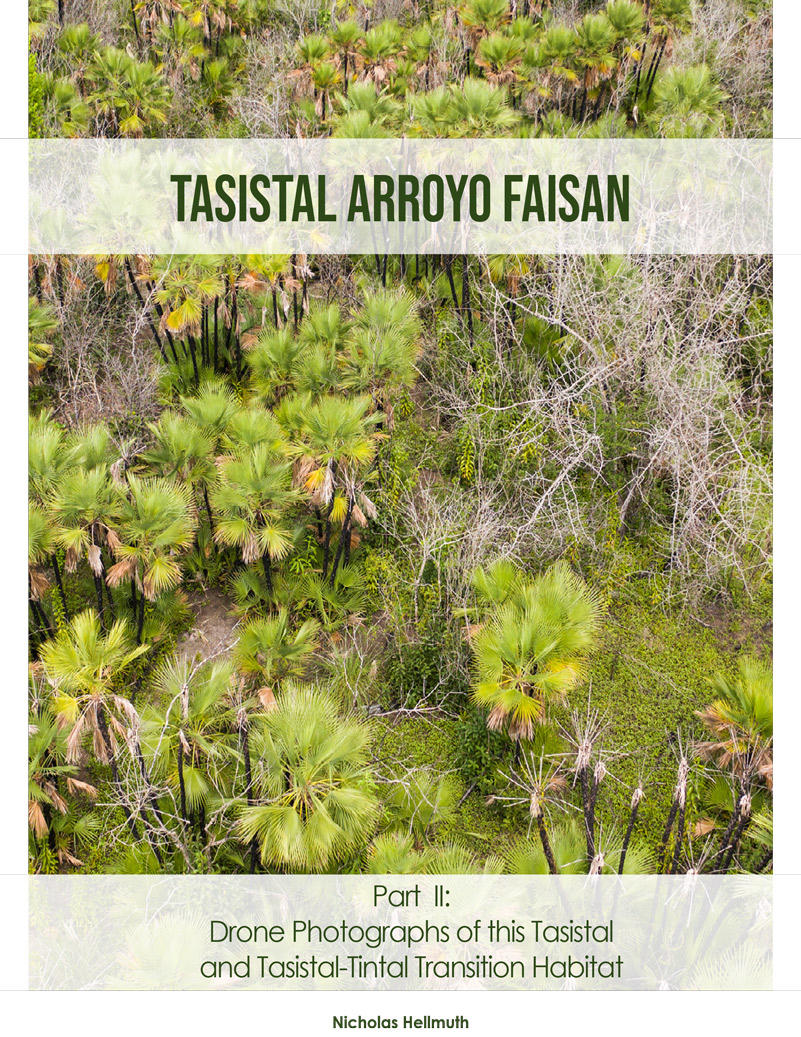Tasiste palms, Acoelorrhaphe wrightii, grow in clusters; a cluster is perhaps 11 or more stems (trunks) physically next to each other growing from a single root mass. A seasonally inundated savanna could have dozens of clusters. The Savanna East of Nakum had perhaps 100 clusters; the Savanna West of Naranjo had a dozen or so clusters; the Savanna of 3 Fern Species (far west of end of Lake Yaxha and then uphill to a plateau) had a few clusters. Since it takes many hours to hike back and forth, and since camping overnight is not recommended or permitted, no one has yet made complete lists what species of plants are in the rectangular section of this savanna area; we had time to explore only parts of the circular area; much of which is a bog; much has a meter of water plus mud even at the height of the dry season of a really dry year.
A tasistal with tasiste palm trees has maybe 50,000 clusters or 70,000 clusters (we estimate a single tasistal can have up to 1,000,000 stems (in lay person’s terms, almost one million palm trunks). Each stem is a complete tree; just that lots of stems grow next to each other from one circular root mass. Stem is a technical botanical term: they are individual tree trunks of a tasiste palm.
We now have four reports for you to experience this remarkable ecosystem.
We appreciate Julian Mariona for telling us about these tasistal areas and the local Sayaxche area guides who took is to Arroyo Faisan and we appreciate the permission of the land owners to visit and study these areas.
Another place to study Acoelorrhaphe wrightii palms is in the Municipio de Livingston, Izabal, Guatemala. Here we have not (yet) found any savannas; the Acoelorrhaphe wrightii palms here are called pimientilla, and are along the edges of rivers, creeks, and lagoons. The Livingston area Acoelorrhaphe wrightii palms we will publish in June.
Posted May 21, 2020

















































































